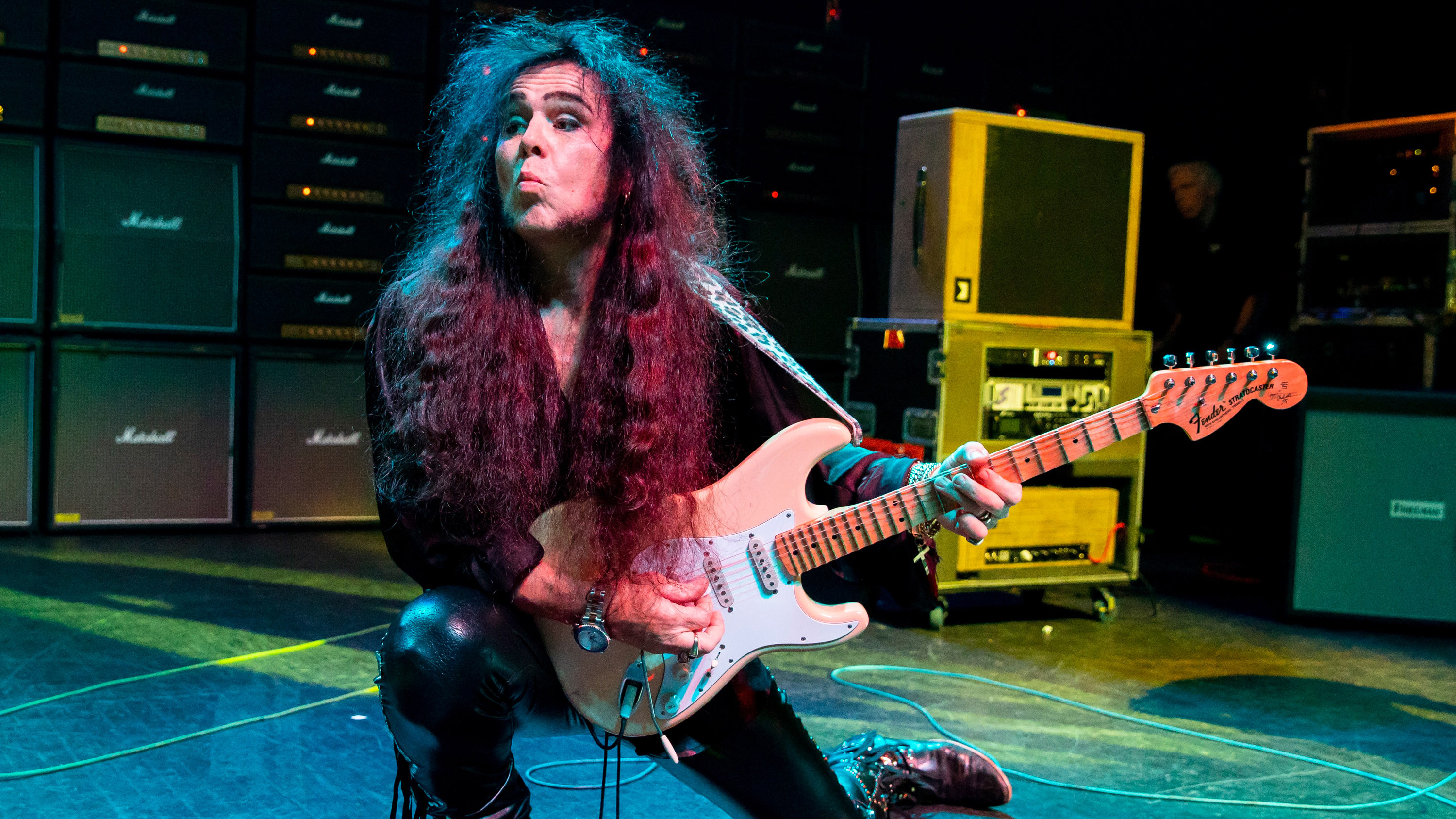
Rick Beato's interview with Yngwie Malmsteen is the best we've seen with the Swedish firebrand – he's open and honest about his art and uncompromising approach to improvisation and tone. But for a player who can pick so cleanly and intricately as a neoclassical guitar trailblazer, we're still shocked at how much gain he blasts out of his signature Marshall tube amps.
"It's nuclear plant, it is ridiculous – it's plutonium, it's insane how much gain it is," confirmed Yngwie in typically understated style. "But you just have to be very selective with how you play so notes don't go into each other." Easy for him to say.
When we spoke to Malmsteen a couple of years ago, he referred to his untamed tone as an "uncontrollable elephant", and referenced it again with Beato. "Onstage, if you stand in front of my amps and you [turn up the bridge pickup volume] it's going to sound like an elephant. Completely uncontrollable distortion and feedback. You have to control it like a big elephant and if you don't have that it's not enough gain, in my opinion.
"My friend Tosin Abasi, he stood in front of my Marshall stacks when we played together [and said], 'Dude you can feel this sound – you can feel it. It's like a physical sound.'"
I used to hate going into the studio
And while his tube amp / Strat approach remains unchanged, in the mid '90s Malmsteen made a huge investment in his future.
"I used to hate going into the studio," he admits. "Even if you weren't inspired, you had to play, and if you made a mistake you couldn't fix it. If you fixed it, the new version could be worse. So it's a horrible psychological thing – it's terrible."
Malmsteen had had enough of it by 1995, and decided to take his recording advance to kit out his own studio. "I took that money that would have cost to go [into Criteria studios in Miami where Malmsteen had worked before] and I had John Arthur, Chris Tsangarides design the studio and decided exactly what gear we were going to put in there – all the tube gear, 1176s and that made a huge difference," he explained to BEato. "I could go in there whenever I felt like it. There was no time running, and it was always ready.
Want all the hottest music and gear news, reviews, deals, features and more, direct to your inbox? Sign up here.

"But the biggest difference was when I realised that if I came up with something spontaneously, I could record it right there it could go on the record. Whereas before you could write something and [record] on a little cassette recorder or something, go in a rehearsal room, knock it out. But then go in the studio put the drums down, put the bass down, guitars… but I'd want 16 more bars: 'Too late'. That is so not conducive to being creative.
"Fifteen years ago I changed to Pro Tools," Malmsteen added. "And I don't use Pro Tools as anything but a recorder. But I realised with my engineer, I said to him, 'Hey that chorus, how about we solo out the chorus there as acapella and put that in front of the song?' Ok. 'Wow that's cool. Let's put it at the end too. And I want a different verse here. Just move it here.' When I realised you could do that, my creativity exploded. And it;s still a real studio – the wood floor, the console… everything real. It's not like I'm making an album with a mouse now – I'm not knocking it, some people do it."

Rob is the Reviews Editor for GuitarWorld.com and MusicRadar guitars, so spends most of his waking hours (and beyond) thinking about and trying the latest gear while making sure our reviews team is giving you thorough and honest tests of it. He's worked for guitar mags and sites as a writer and editor for nearly 20 years but still winces at the thought of restringing anything with a Floyd Rose.